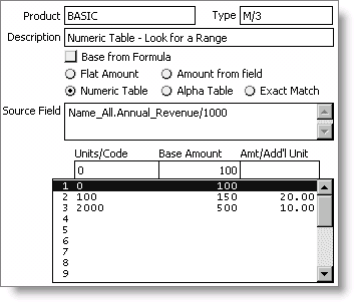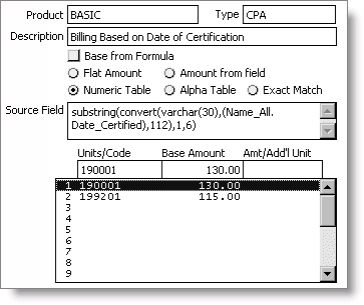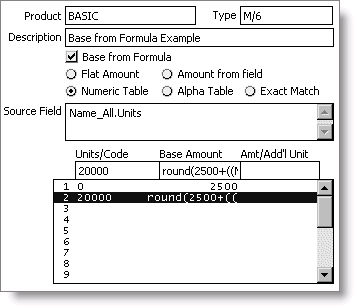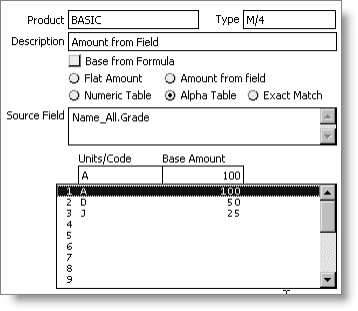Pricing based on a numeric table
Example 1
In this example, rates are assigned according to the customer's annual revenue divided by 1,000. If the net result falls between 0-99, the customer is charged $100. If the net result falls between 100-1999, the customer is charged $150 plus $20 for each over the initial value of 100. The revenue information is stored in the user-defined field Annual_Rev.

Example 2
In this example, CPAs certified before 1992 are billed $130. Those certified after 1992 are billed at $115. The certification date is stored in the user-defined Date_Certified field.

Example 3
In this example, rates are assigned according to the formula that was added to the base amount. According to this formula, a customer will be billed a flat amount of $2,500 until 20,000 units have been billed. After 20,000 units, an additional charge of .0001/unit is billed. The number 2 shown at the end of the formula indicates the amount billed should be rounded to two decimal places.

Note: To view the entire formula, press Crtl+Z to expand the formula area.

Expanded Base Amount field showing formula
To define pricing based on an alpha table
In this example, rates are assigned according to the customer's grade. The grade information is stored in the user-defined Grade field. If the customer's grade is A-C, the billing rate is $100. If the grade is D-I, the billing rate is $50. For grades equal to or greater than J, the billing rate is $25.
